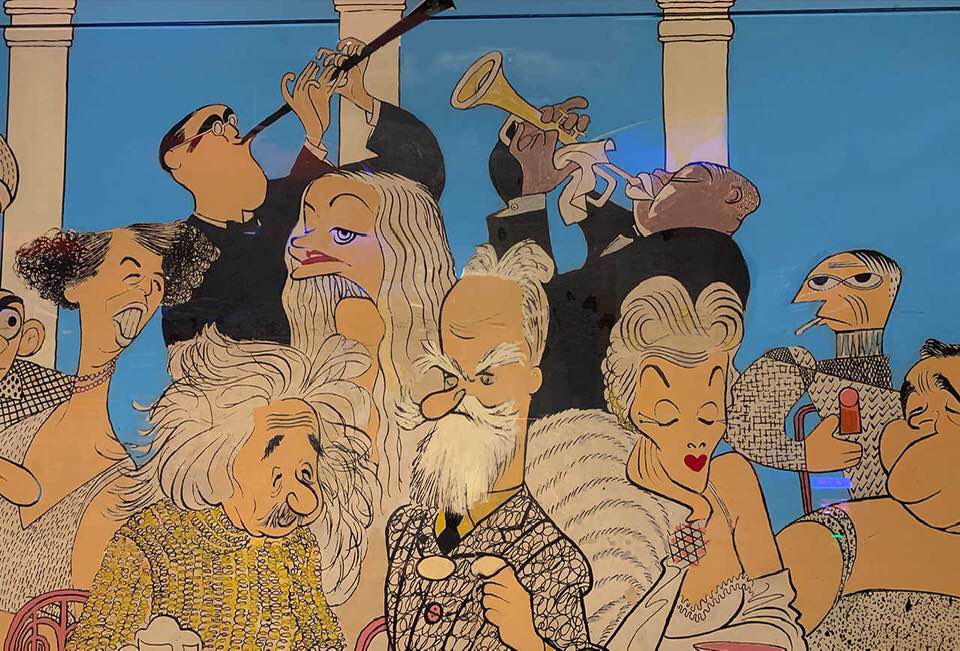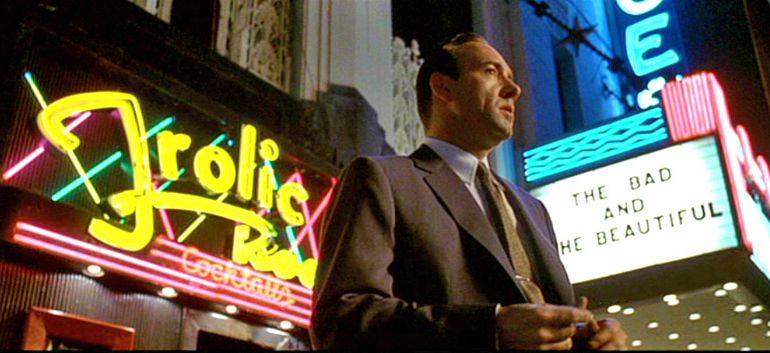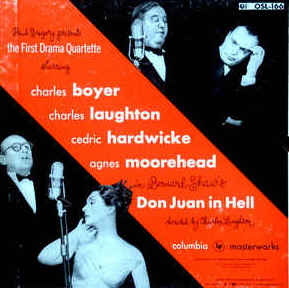
A friend of mine sent me this color photograph the other day, remarking that he suspected it was the only time that Louis Armstrong and George Bernard Shaw appeared in the same painting.
It is, as I immediately guessed, by Al Hirschfeld, but I knew nothing about it, and was delighted to learn that it’s a detail from a much larger mural by Hirschfeld that hangs on one of the walls of the Frolic Room, a Hollywood bar. The people portrayed therein are all—or, rather, were—celebrities of the Thirties. I recognized most of them, though a few eluded my grasp.
The Frolic Room opened in 1934 and has been in continuous operation since then. It is, I gather, is the last old-fashioned dive bar on Hollywood Boulevard, a fact universally known to historically aware Los Angelenos that had, I blush to admit, escaped my awareness until now. Located next door to the Pantages Theater, it has a long and elaborate history about which it is amusing to read. While I’ve never been to the Frolic Room, I’ve seen it, and so, most likely, have you. Its distinctive neon sign appears in any number of films, most recently in Quentin Tarantino’s Once Upon a Time in Hollywood and most prominently in Curtis Hanson’s L.A. Confidential, in which a key scene involving Jack Vincennes, Kevin Spacey’s character, unfolds there. You can bet that Mrs. T and I will have a drink there on our next visit to Hollywood.
Most of them are full of music: “I have all my records on tape, interviews, and every classical number that you can think of….And I index them—why, that’s my hobby.” His collection was an eclectic mishmash that comprises, among other things, Walter Gieseking playing Debussy, Helen Traubel singing the Liebestod, Debussy’s Prélude à l’après-midi d’un faune and Shostakovich’s First Symphony, the original-cast albums of The King and I and South Pacific, recordings of Julius Caesar and Don Juan in Hell, and jazz and pop in profusion: Bix Beiderbecke, Bunny Berigan, Bing Crosby, Fats Waller, Bert Williams, and a surprising amount of modern jazz, including albums by Stan Kenton, the Modern Jazz Quartet, Thelonious Monk, Gerry Mulligan, and George Shearing.

* * *
A scene from L.A. Confidential:
A video feature about the Frolic Room:
The First Drama Quartette’s 1952 recording of Don Juan in Hell:
